- It’s What We Do
- Riding the Cordillera Blanca – South America at its best
- BMW F800GS – Off to the Safari Enduro
- Industry Player – Geeze Goldhawk
- White sand to red dust – A PLB story
- Crazy Kunzum La – A tough run in the Himalayas
- Ladies only – BMW Off Road Training
- Off-road Test – Husqvarna 701 Enduro
- Across Australia – From the Indian to the Pacific
- Tour Of Duty: A Victorian three-day
- KTM Rallye 2016 – KTMs all over the place
- Domestic bliss – At home with the Ducati Multistrada Enduro
- Reader’s Ride – The Flinders
- Trials and tribulations with Karen Ramsay
- Dunns swamp – Another great secret location
- How To Ride with Miles Davis
- Checkout
- Fit Out
The solo rider looks adventure square in the eye. Mike Treloar didn’t blink when things went wrong.
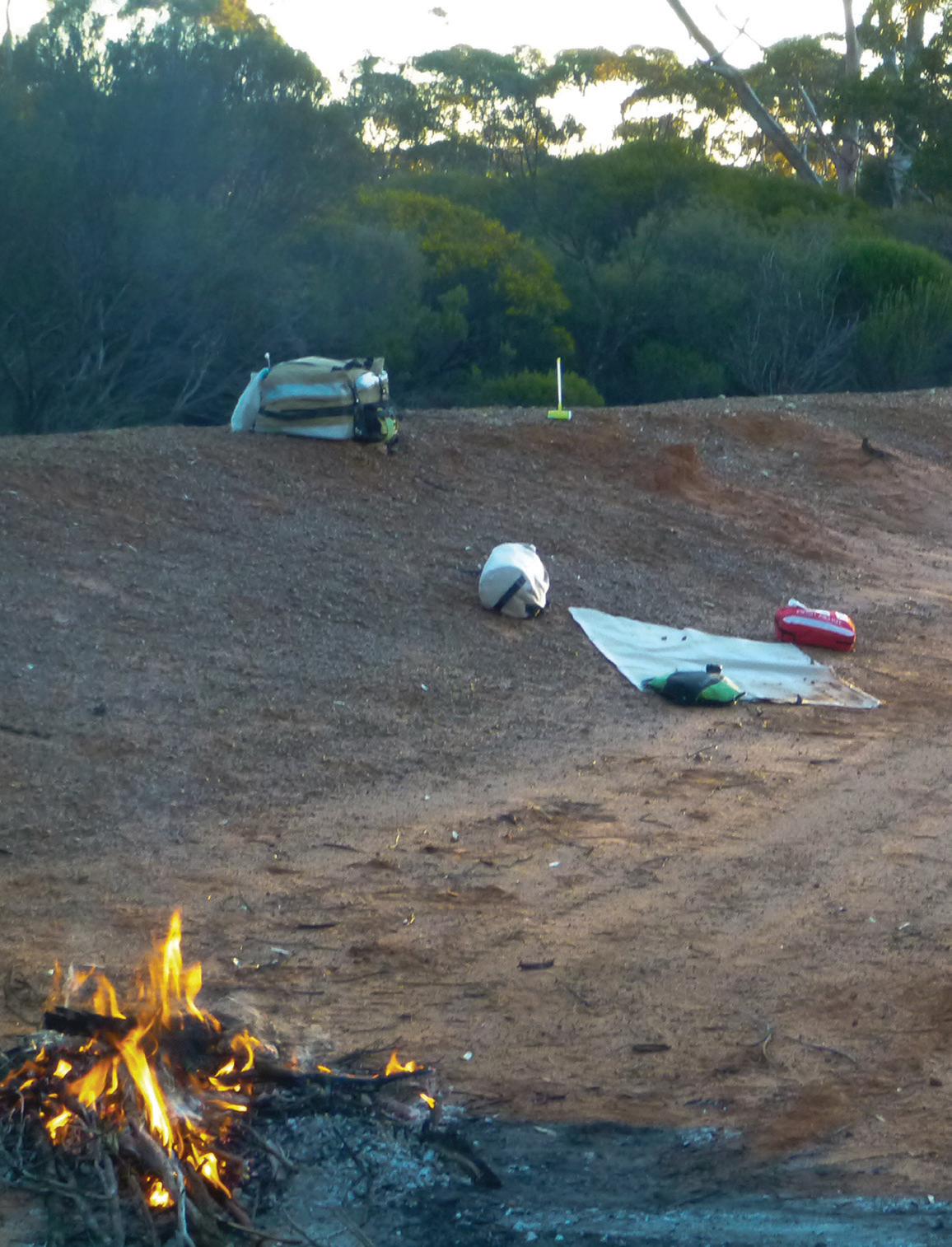
There’s nothing like the feeling of taking off on a trip, stresses and last-minute chores either completed or left until the return, bike packed, kids kissed goodbye, a pat and bone for the dog.
The white sands of my home beach on the WA coast were to be swapped for the red, desert sand 14 days to the east of my home.
Settling in
There’s no greater sense of freedom than the one I felt as I rode down the farm’s drive. The bike felt sluggish under its load of gear, but we hit the road and she pulled away into the cool morning air. Tuart trees lined my path for the first few clicks, then it was over the highway and into the flat farming country which makes up WA’s south-western coastal plain.
Heading east from my corner of WA left the coast and its flat, sandy, plain before rising into a forested escarpment. At the top the Jarrah forest was left behind and the farms became bigger and dryer, and the passing traffic dwindled.
Every vehicle that did pass was a ute with a kelpie hanging out the side. We’d wave while the dog barked.
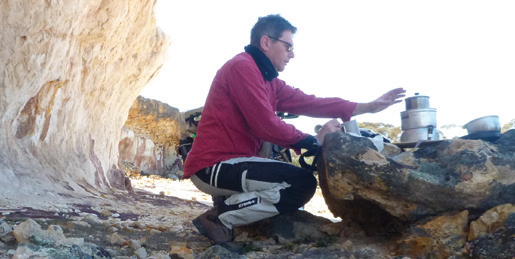
I hit the dirt again, flicked the GS into enduro mode and added a click on the steering damper. I stood on the ’pegs and enjoyed my bike bobbing and dancing under me. Slipping and sliding through each corner on the notorious south-west pea gravel left little option but to accelerate to get around turns, and every kilometre found me more comfortable and at one with the bike.
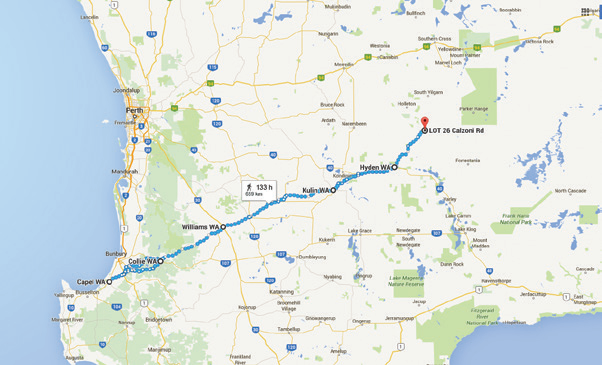
Cracked up
Within an hour I was in the coal town of Collie where grand old buildings, a sign of better times, lined the main street and peeling paint indicated a town in decline.
Shop windows gave me the opportunity to check my reflection, and all looked to be in place with nothing dragging behind.
A cuppa stop was more to do with getting rid of a wedgie than needing a break.
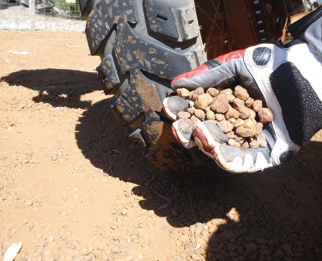
Not recommended
Continuing east, the farms gave way from grazing cattle to grain crops and sheep, the bush thinned to mallee and it was black-top riding for a long time. Towns slipped by as the sun climbed out of my eyes and my shadow moved in front of me.
Williams went by, as did Kulin.
The roads were empty and the rolling hills were either yellow with canola or bright green with wheat.
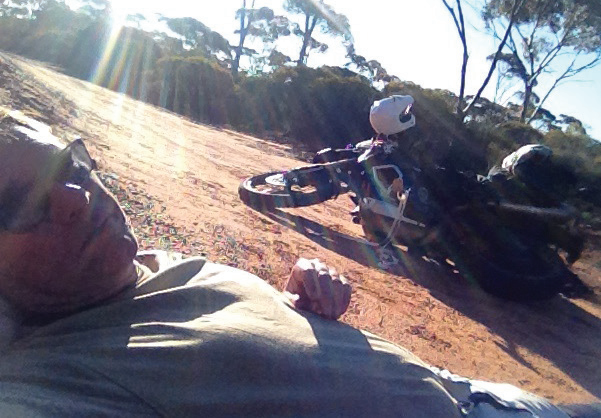
The further inland I pressed the shorter the grain crops grew, a testament to the dry centre getting closer.
This was great riding country. It wasn’t challenging, and there were small towns with a pub or two, and in between the farms bush reserves offered plenty of camping opportunities. Just don’t expect high-octane fuel at the smaller towns.
My goal for the night was east of Hyden, best known for Wave Rock, and riding into town at about 3:00pm was beautiful. The bright-orange school buses were spreading out from town as I pulled into the bakery which was just shutting shop for the day, but was only too happy to let me pull up and sample its food.
We chatted about the heavy frost killing crops the night before and I thought about how I’d be camping that night.
Next door the butcher give me a bit of his best rump – read that however you like – and I fuelled up. It was 500km to the next servo, so I filled a few two-litre softdrink bottles with petrol as reserve.
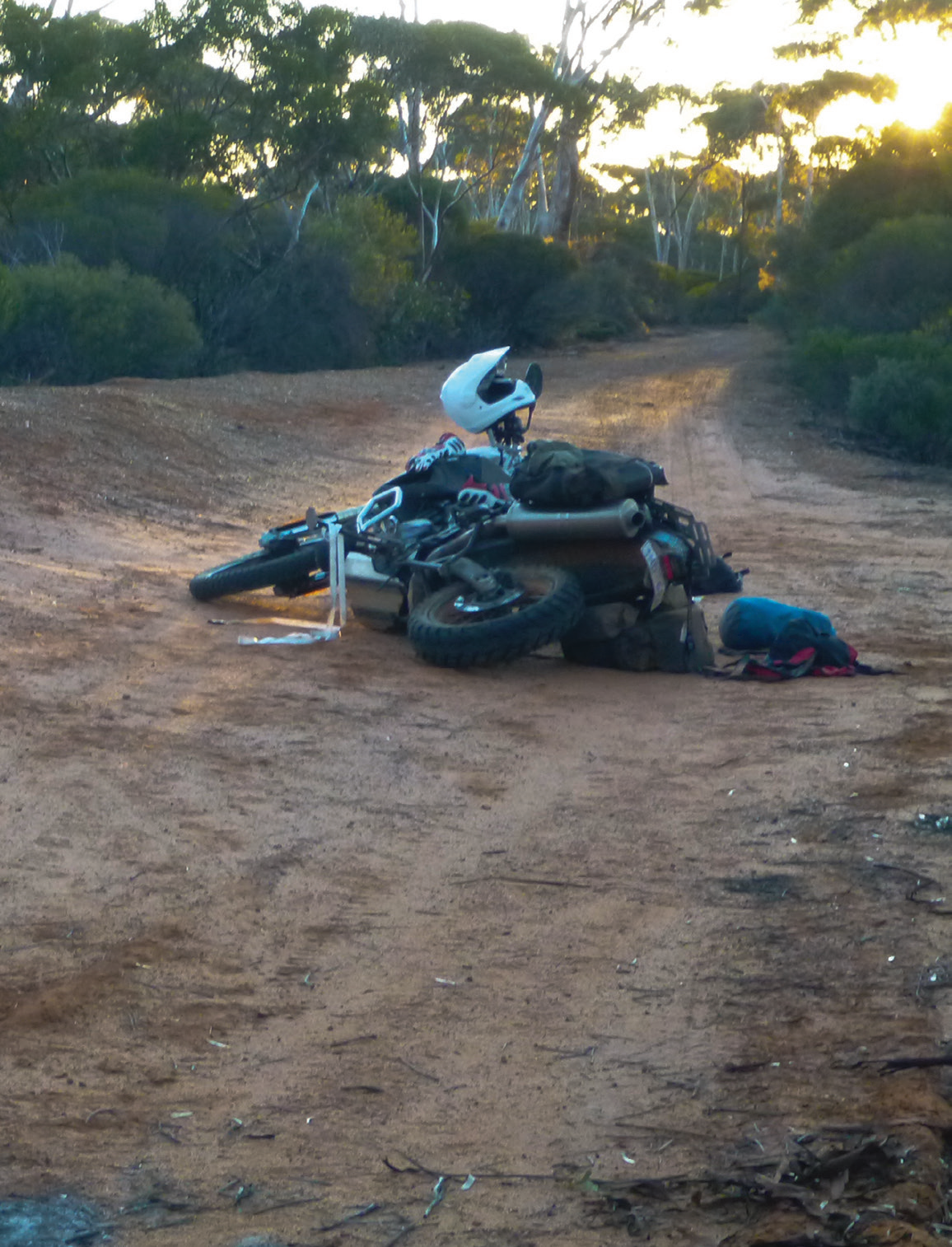
Bagged out
East of Hyden the farming country stopped abruptly just after the rabbit-proof fence.
The low scrub was split by the road to Norseman, and like all development roads out there it’s wide, straight and in good condition.
I wanted to be off the bike by 4:00pm to avoid the wildlife and it wasn’t long before a nice camp spot appeared. I had my tent up, the kettle on and was enveloped by the silence only remote desert country can offer. The heat of the day quickly turned cool. Then very cold.
I sat by the fire with my front half toasty while fingers of cold dug into my back and there wasn’t a soul on the road. The warmth of my sleeping bag had me bunked down early.
 A nice camp spot. Tent up, kettle on and enveloped by the silence only remote desert country can offer.
A nice camp spot. Tent up, kettle on and enveloped by the silence only remote desert country can offer.
See creatures
Frost greeted me at sunrise. I could tell I’d come a fair way east because sunrise was 15 minutes earlier than at home.
Then things started going wrong.
While I was sorting out breakfast my new chair was flung into the fire by the frigid desert wind. By the time I noticed it was all but gone.
Great. Ten days of sitting by the fire in the lotus position!
Hitting the track after the ’roos had stopped moving meant a slow start and it was still cold, so I hunkered down on the bike and tried to move as little as possible.
My mind wandered. Looking at the dash I started wondering why my high-beam indicator look like a blue jellyfish. Then I noticed my heated-grips indicator looked like a crayfish.
In no time the great, open expanse before me warmed up, requiring regular stops to take off layers of clothing.
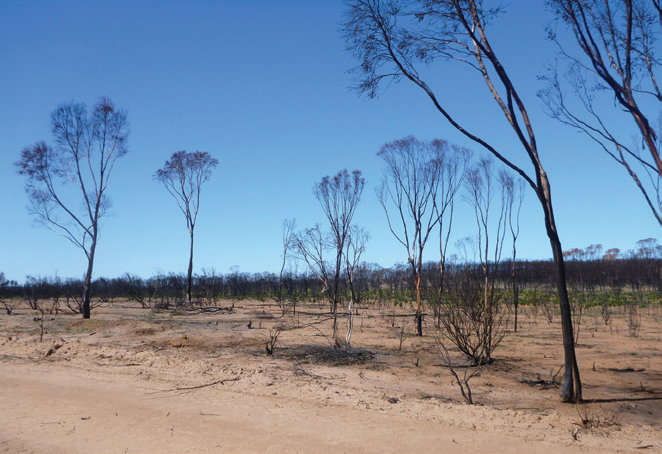
A salt
An hour later I hit some breakaway country and enjoyed an early lunch in the shade of an overhanging cliff. I still hadn’t seen a single person.
Turning north I left the dirt road for a track and the woodlands of the goldfields started to surround me. It was beautiful country where flowering shrubs sparsely covered the ground under spreading tree branches, and, where the granite was close to the surface, meadows of everlastings grew.
No one had been on this track since the last rain two weeks before and branches swiped me as I passed. I constantly switched from one wheel rut to the other trying to get the best line. There were no more open vistas of the wheat belt.
After lunch I came across the first people I’d seen in two days, and stopping for a chat I found my destination for the night.
Cave Hill Rock was only a few hours ride away.
An hour later I hit the first remains of a rail track. Prior to the pipeline from Perth to Kalgoorlie all the town’s water came from desalination, and fingers of rail headed out from Kalgoorlie to collect timber to be burnt, the heat needed to create steam and fresh water.
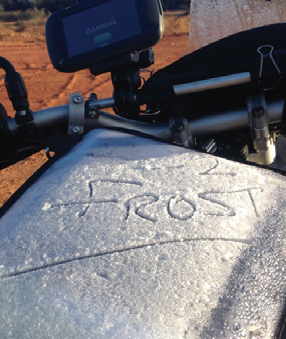
Going down
The track I rode didn’t appear on my GPS, but it was going where I wanted to be so I figured all was good.
Then more tracks criss-crossed mine.
I stopped to zoom out on the GPS and found the track I wanted was behind me. As I went to slowly turn around I dropped the BMW.
My first thought was: “That didn’t hurt.”
The motor was still running, so I hit the kill switch and struggled for several minutes to get my leg out from under my bike. Without any real worry I stood and went to lift the bike, but it wouldn’t move.
The bike had landed leaning down the slope.
Not good
Okay, so I couldn’t lift it. I took off my riding gear, emptied the panniers and tried again.
Nothing.
This had never happened before.
I sat down to take in the situation. There wasn’t a sound other than the ticking of the hot engine. No one had been on this track for weeks.
I joined all my straps together in an effort to try and drag the bike around so it was facing up, but the straps snapped.
And I hurt my back. Bad.
I rolled around the ground trying to stretch out the painful spasm.
I tried digging a hole to get the bike at 180 degrees, but the ground was as hard as stone.
“When in doubt, have a cuppa,” is a good rule. So I drank coffee and thought. Every move triggered spasms of sharp pain through my lower back.
I had six litres of water, three days worth of food, a great deal of pain and nothing broken. Cave Hill Rock had a camping ground with a large water reserve and it was 15km from my position. Last time I was there several campers were at its base. I needed someone to give me a lift and a day to rest my back. If I could organise that all would be apples, I figured.

Back again
I took a few painkillers and some Valium for the back spasms with my coffee, and I soon saw why they called the relaxant the housewife’s friend.
An hour of rest and my bike was still clicking and ticking. I hoped it was the sound of cooling metal and not something dripping where it shouldn’t.
An hour later I set off, GPS in hand, to look for help.
Twenty minutes after I started in I remembered I hadn’t set a waypoint for the bike. Bugger!
I walked back, pressed the button and headed off for the second time.
Walking was hard going.
The back pain, afternoon heat and a sandy track slowed me down.
No help
Finally I saw the large shape of Cave Hill Rock through the trees.
Reaching the base I could see no one at the campsite, and it looked like nobody had been there in more than a week. I headed to the campsite on the far side of the rock, but there was no one there either. Even the long-drop toilets hadn’t been used for a long time.
I climbed the mini Uluru and from the top I could see for kilometres. There was nothing but bush. The remoteness was breathtaking.
I rested on top of this granite rock, munched on my last apple and thought.
It was time to refill my water and head back.
Crunch time
It was a long walk back that gave plenty of time to think. Should I wait? Try to walk out? Or press the button on the PLB?
Five kilometres from the bike my GPS stopped working. It was a good thing I’d marked each corner with a bit of clothing.
Back at the bike my back locked up to the point where I could no longer stand.
At least it took my mind off the blisters.
A night sleeping out followed – my sleeping gear was in the pannier under the bike – and morning found me in the same position as the night before. It was time to activate the PLB. There was no other option I could see.
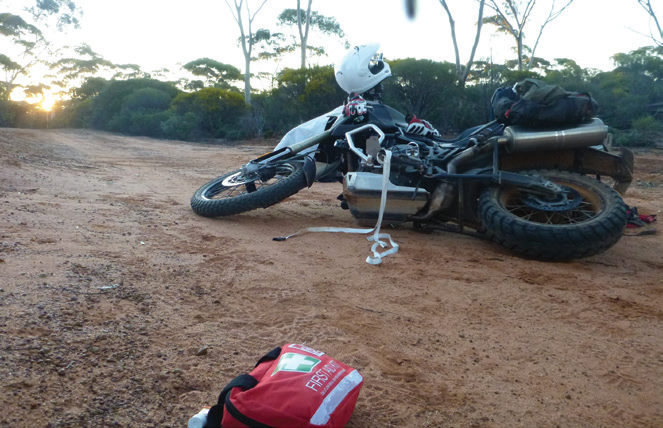
Good decision
I pressed PLB button. Within an hour a plane started a grid search far off, getting closer with each turn. I lit my signal fire and threw on some green branches to generate some smoke, but the fire was too hot and burned clean.
I threw plastic on the fire and the plane saw it.
An hour later a big, red plane joined in the circling. They dropped a tub on a ’chute which had a radio and a Sat phone – but no espresso!
I could then speak to the plane.
The aircraft hung around until police from Kambalda arrived about five hours later. I told them it wasn’t essentially life-or-death stuff, but they said they had to stay overhead.
I thought the cops would blast me, but they were great. It was six hours driving to get out, and two days later they drove me back to collect the bike, then they followed me back. They (the police) said they’d much prefer to respond to a PLB signal than do a full search. At the time this was all going on they were carrying out a search for a lost 4WD north of Kalgoorlie, and it was tying up two planes, three helicopters and over 100 people.
Thank god they don’t send out bills for the service.

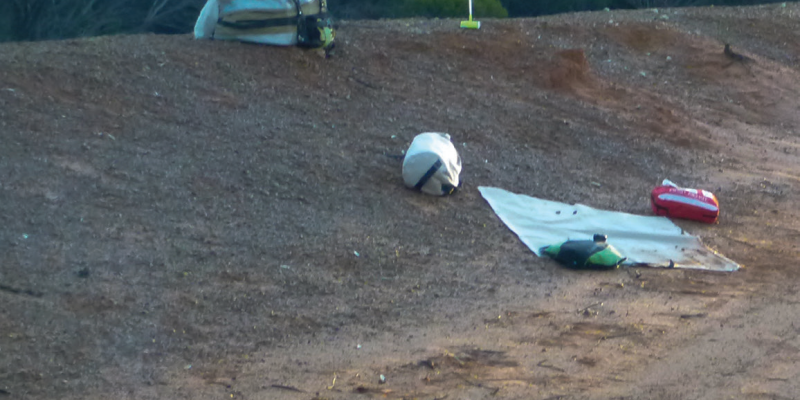

















Comments